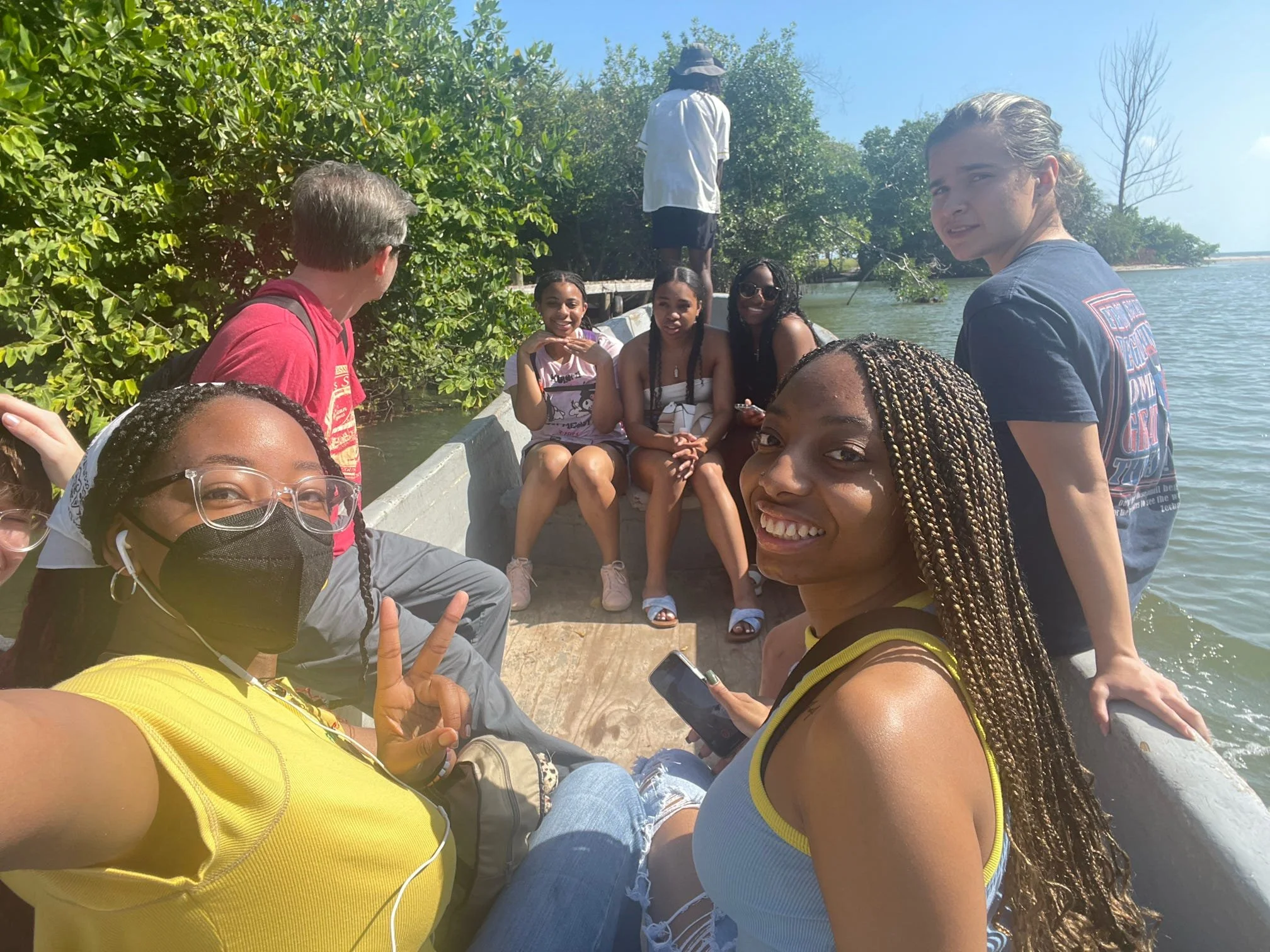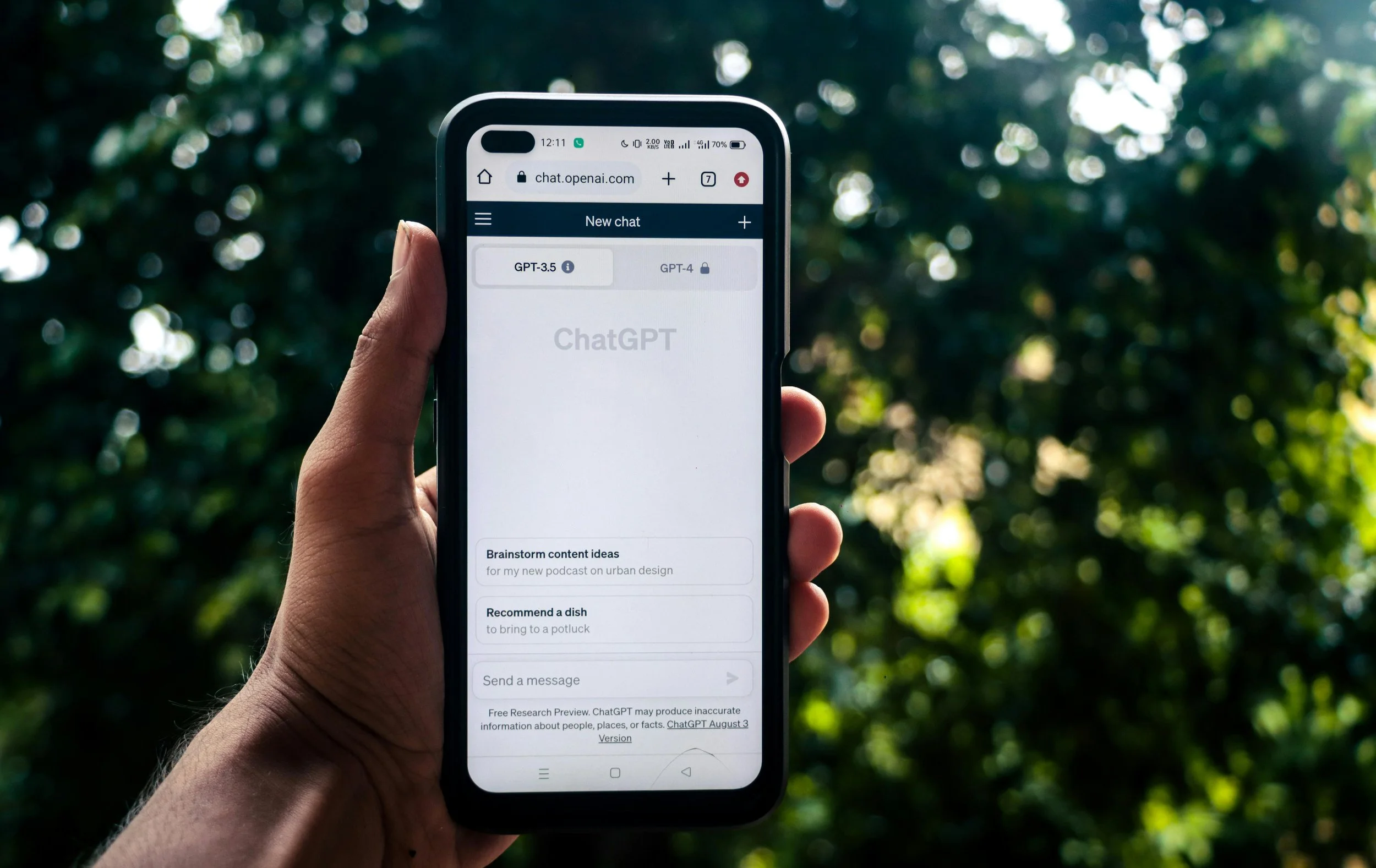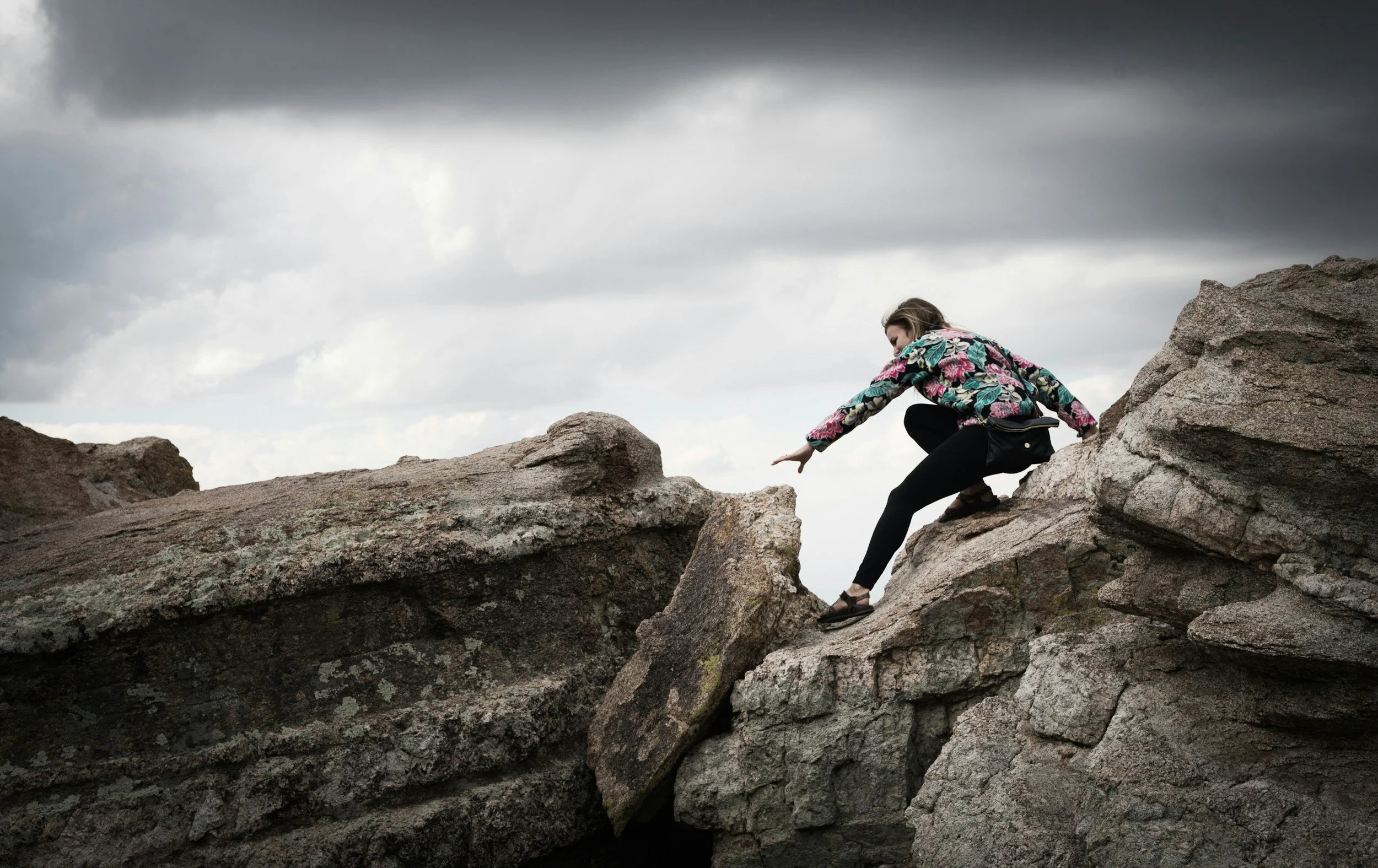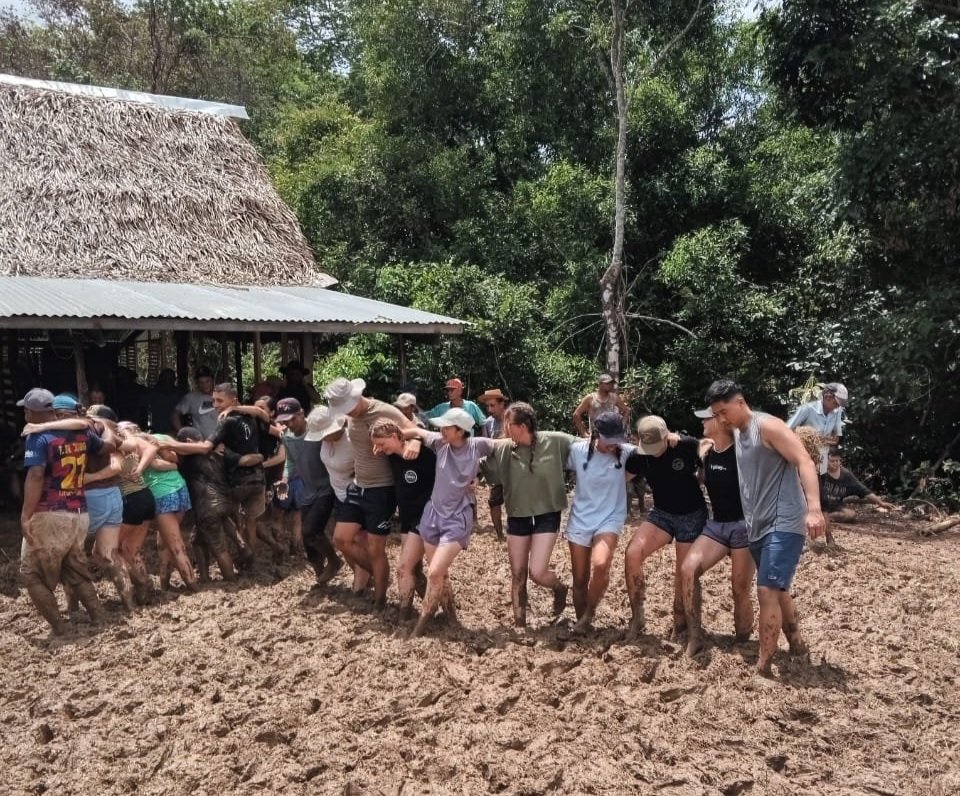A Virtual Journey Through the Reconstruction of the Mesoamerican Coral Reef System (Part 2 of 2)
/by Katie Brickwood
This March I joined Learn from Travel’s virtual study abroad programs for Agnes Scott College as a substitute virtual guide coordinator. I got the chance to audit two of the seven fascinating programs organized by Learn from Travel: “Marronage, Freedom and Resistance in the African Diaspora” based in Sierra Leone and “Marine Ecosystems'' based in Florida and Belize. In this two-part blog series, I share my experience attending virtual study abroad programs from the perspective of a student. Read part 1 of this series.
Virtual Study Abroad in Belize and Florida at Glance
Day 1: Virtual Reality diving in Belize, and meeting with ecology students
Day 2: Remote lab visit: How do you grow a coral reef?
Day 3: On a 360 degree virtual lookout for manatees in the mangroves in Florida
Day 1: Virtual Reality diving in Belize, and meeting with ecology students
Monday, 8th March 2021
Day 1 of my exploration of Marine Ecosystems across the Florida Keys and Belize took me first to Caye Caulker where the class connected with Belizean teachers and students to talk about the island's environment, habitats and species. It was really cool to be able to chat with local high school students. They are really passionate about their island and the importance of their local environment.
In the afternoon we met virtually with biodiversity scientist, Valentine Rosado, at his office on another Belizean island, San Pedro. Valentine took us on a 360 degree dive through the coral reef and talked us through the importance of protecting the local biodiversity. The preservation of biodiversity in Belize is particularly challenging, as it is a country whose economy largely depends on its environment through ecotourism, but this preservation can also be at odds with other industries and areas of development. Valentine was really passionate and optimistic that there are ways to reconcile these competing interests, but there is still a lot of work to be done.
Manatees spotted around the Barrier Reef, especially near Swallow Caye
I finished the day cooking with Chef Sylvia, who taught us how to make lobster tail coconut rice. She had the counter in her kitchen laid with fresh ingredients and spices – it was mouth-watering to watch her cook! She explained that lobsters are a protected species in Belize that cannot be harvested during breeding season, to avoid catching females with eggs. She also explained the importance of spicy habanero to the Belize cuisine, and that every family has a habanero tree in their yards. “Naught little guys, they pack a punch but the flavor is amazing. Some people feel that they can’t live without habanero,” she said.
Day 2: Remote lab visit: How do you grow a coral reef?
Tuesday, 9th March 2021
I was inspired and motivated to speak with Jessyca Garlock today, a young employee of Mote’s Research Lab on Summerland Key in the Florida Keys (which is the only coral reef in the continental US). Jessyca gave us a virtual tour of the facility and spoke about the work that Mote is doing in coral reef restoration and research. She explained in detail the process starting with micro-fragmenting, which breaks coral into smaller fragments to activate faster tissue growth, then growing the fragments until they are ready to be outplanted back on the reef. This is a key method they are using to regenerate the reef and has had a 95% success rate!
Coral gardens, Belize Barrier Reef
I then had another virtual visit with Valentine on San Pedro. Our conversation today focused on the importance of supporting the next generation of marine leaders in Belize, given that the project of marine restoration and regeneration is multi-generational. Valentine heads the Marine Apprenticeship Program that provides training and mentorship to young leaders in the community who are interested in getting into marine work. He introduced the class to several young people who have gone through the program and explained some of the projects they have worked on - from helping to monitor coral diseases to setting up coral nurseries.
One student asked Valentine about the impact of tourism on the marine environment, and I was surprised that he responded that tourists themselves actually help the marine ecology of Belize by supporting the local economy and spending dollars on marine activities. He explained that we have to be careful of unsustainable development that can come with increased tourism, like coastal construction that harms the environment.
Day 3: On a 360 degree virtual lookout for manatees in the mangroves in Florida
Wednesday, 10th March 2021
Today was all about manatees, mangroves, and seagrass! I started off with eco-tour guide Richard in Belize, who taught the class about mangrove ecosystems and the different wildlife that lives there. I had no idea that mangroves were so colorful! The waters were red, black, and green, and Richard shared that the red mangroves actually sweat out the salt water on their leaves, and the Maya would collect this high nutrient salt for trading.
The coolest part of the day was the 360 degree virtual reality kayak adventure in the Miami-Dade with Ed Pritchard of the Crandon Park Nature Centre and LFT’s Roman Yavich! I glided over glassy shallow waters from the beach towards the mangroves, with an eye out for marine life. Feeling as if I was sitting in the kayak with Ed and Roman, I came across a purple and dangerous Portuguese Man-o-war and a giant hermit crab that had taken over a beautiful Queen Conch shell. Too bad Ed and Roman didn’t find any manatees this time, which Ed explained probably because the water is quite cool for them at this time of year.
Coastal Belizeans fishing
Moving back down to Belize in the afternoon, we had a conversation with Maria Vega, a park ranger and the Swallow Caye Marine Reserve which is just off the coast from Belize city. Maria explained in depth the laws, protocols and conventions around protected areas in Belize, which include marine and mangrove reserves, archaeological sites and more. Maria then spoke about manatees, explaining that they rely on the sea grass for food and at the same time are equally important to the health of the seagrass beds through managing the growth and also providing nutrients. It really blows my mind how inextricably linked all of these parts of the mangrove system are, as well as with the broader marine ecosystem.
Day 4: Crocs, turtles and activism in the Belizean Cayes
Thursday, 11th March 2021
Sea turtles are common to both Belize and Florida
I feel like I just met Steve Irwin! Only his name was Chris Summers and he is the Director at ACES (American Crocodile Education Sanctuary) in San Pedro. Chris shared the work that ACES does around rescue and rehabilitation of the crocs, whose biggest threats are pollution, mangrove destruction and human attacks. We saw some pretty sobering photos of crocs that ACES have attended to, including one that starved to death after swallowing more than 80 plastic bags. It made me reflect on something Ed had mentioned yesterday about the huge effect that my consumption habits can have hundreds of miles away.
Later in the day I met ‘Sparb’ at The Turtle Hospital in the Florida Keys. Sparb had recently been attacked by a shark and was missing half of a flipper and had sustained a lot of damage to her shell, which turtles use as a shield against sharks. I saw her receive a ‘honey bath’, which is what the Hospital uses as a natural antiseptic. I learned an interesting local anecdote, which says that if sea turtles nest far from the shore it’s going to be a bad hurricane season. Last year the turtles were nesting so far inland that they were in the woods, and sure enough 2020 was one of the worst hurricane seasons in recent records!
I finished the day on a high after talking with Vilma Arceo, a young activist from Ambergris Caye. She has been an environmental activist since the age of 11, and is part of a citizen led organization focused on ensuring the sustainable development on the island in consultation with the local community. She had many examples of successful campaigns against unsustainable developments (including one on an island bought by Leonardo DiCaprio!) and it was great to learn some practical steps that can be taken towards greater local activism that I can apply in my own community.
Day 5: The Maya and diversity of culture in Belize
Friday, 12 March 2021
Today was my last day in the Florida Keys and the cayes of Belize! The day was packed full, starting with a tour of the National Oceanic and Atmospheric Administration (NOAA) Eco-discovery Center in Key West, and ending with a discussion of Belizean culture in Caye Caulker. Our virtual tour with NOAA reinforced a theme that I’ve been thinking about a lot this week, which is the interconnectedness of all of these important ecosystems we’ve been learning about, and of my impact on ecosystems seemingly far away.
Xunantunich Mayan Ruins
It was a treat to come onto dry land today and dig deep into Belizean culture. Luis Godoy of Belize Natural Travel took us on a pre-recorded private tour of the Xunantunich Mayan site. Walking through the site with Luis I arrived at ‘El Castillo’ (the Castle), where I could see incredibly well-preserved hieroglyphics representing the Sun, Rain and Moon Gods. Luis explained that while the reason the Maya abandoned sites like this one is uncertain, they were likely “the creators of their own destruction” as their advanced agriculture technologies removed important rainforests, leading to major droughts that forced them to leave their settlements. I couldn’t help but draw the connection with modern society and how we may well be on our way to creating our own destruction in a very similar way.
It was really nice to finish this program the way we started – speaking with local Belizean students, this time about culture. We spoke with Nythiria, Vincent and their teachers Mrs. Usher about the melting pot of culture that is Belize; including the Mayan, Garifuna, Mestizo, and Creole people. I learned that Belize is one of the most tolerant countries with respect to the mix of religions and cultures living peacefully together. Nythiria summed it up saying “My culture is all peace and love!”. This was really touching and it seems like the rest of the world has a lot to learn from Belizeans in this respect! I know I have learned a lot from them over this week.

















